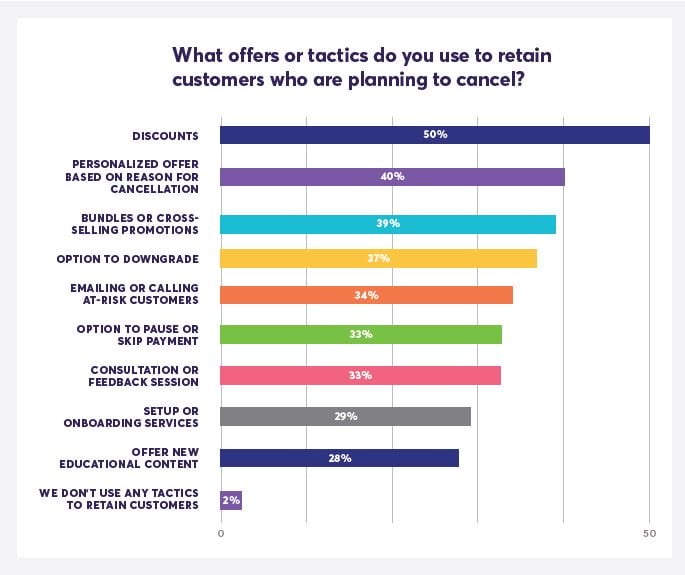In order to retain the customers, you currently have you first had to acquire them. So, once you have your customers, how important is customer retention? According to a new survey and report from Brightback, 93% of professionals in subscription businesses think it is just as or more important than the acquisition.
The value of one over the other comes in play with business models. If you have a subscription model, the 93% answer makes a lot of sense.
However, it doesn’t mean a small business with foot traffic wouldn’t like repeat customers. When you take into account Lifetime Value (LTV)/ Customer Acquisition Cost (CAC) ratio, businesses will have different perspectives. Furthermore, B2C, B2B and hybrid companies will have contrasting approaches in their customer acquisition and retention.
In writing the blog for the report, Darrian Wright explains, “The data underscores the differences in how companies that sell to consumers vs. businesses set their metrics and approach retention tactics.”
Adding, “We found subscription companies have completed a shift in focus toward retention over acquisition, but still struggle to execute and engage their customers across teams and systems.” And when it comes to subscription models, the industry is prioritizing running a business with a focus on retention to drive more revenue and actively reduce customer churn.
Customer Retention vs Acquisition
Similar to the 93% of professionals who see the importance of customer retention, subscription leaders are banking on their current customers to drive most of the growth in 2020. According to the report, the top priorities for companies are retention, acquisition and onboarding.
With so much emphasis on retention, it is not surprising 96% believe they can manage or fix the reasons customers cancel. Although this level of optimism is impressive, the fact that no single department or team is in charge of reducing the attrition levels is distressing.
When it comes to the ownership of customer churn, more than 80% say it falls under customer success, sales, operations and marketing department. Creating or identifying a single department for churn ownership is extremely important in today’s digital ecosystem. This is because the customer experience is playing an increasingly important role. If your company can’t identify the problem and solve it, the churn rate will continue to increase no matter how optimistic your employees are.
When a department or individual has been identified to manage churn, a business can start to implement concrete retention measures.
Retention Measures
Overall, the report reveals there is not a single retention strategy or program rising to the top in 2020. The respondents in the survey gave a wide range of solutions. But the highest resource was allocated to customer loyalty programs at only 17%.
An equal percentage of respondents (14%) say better tracking of why customers cancel and creating or improving automated workflows. And investing in new channels to engage customers is next at 11%.
With so much discrepancy, the survey highlights the need to find a proven method to keep customers coming back. There are many reasons why customers cancel a subscription. But using predictive and proactive solutions with the right data set and retention tactics is how businesses are moving forward.
By collecting better data and analyzing the information, businesses can better respond to customer churn as soon as it takes place. In the survey, the professionals say they plan to offer discounts (50%), personalized offer based on reason for cancellation (40%), bundles or cross-over selling promotions (39%), and option to downgrade (37%) as some of the tactics to keep customers who are planning to cancel.
If you have intentionally made the cancellation process difficult, think it over. Because it doesn’t have to be as online processes can simplify things.
Online Processes and Subscription Businesses
Digital platforms are a key component in today’s subscription services. Everything from Netflix to insurance payments, mortgages, groceries, and ride-sharing can be managed digitally.
For service providers, it means having a complete view of their customer profile to better serve their needs. This, in turn, is allowing them to create new product lines based on the specific needs of their customer base. With such offerings, customers will continue to see more value in doing business with the company, thus prolonging long-term relationships.
And as mentioned earlier, the customer experience has to be paramount for an online process. Making the process complicated is one way of ensuring your customers never come back.
The Survey
Brightback carried out an online survey in partnership with consumer research company, Centiment. The close to 435 participants in the survey work at subscription-model companies that self-identify as having a direct impact on customer retention.
All the respondents live in North America. And they work in the technology, manufacturing, finance, retail, healthcare, banking, education, and other industries. Some of the respondents were CMO, CEO, Founder, CRO (Chief Revenue Officer), VP Marketing, VP Retention Marketing and more.
Image: Depositphotos.com

